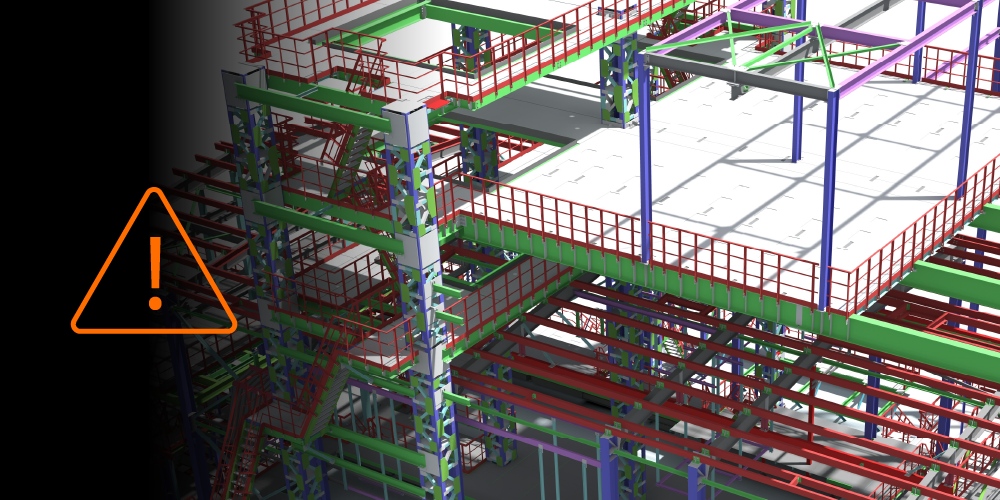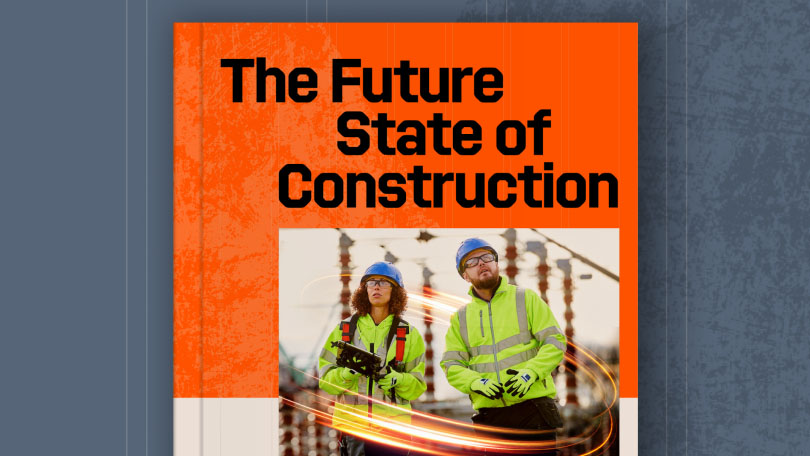Related Articles
— 6 min read
How to Run an Effective Pre-Start Meeting on Construction Sites
Last Updated Sep 10, 2025
Samantha Nemeny
31 articles
Sam—Samantha if she’s feeling particularly academic—has spent a decade in content marketing, with eight years focused on Australia’s construction industry. She has a knack for making complex ideas easy to understand, turning industry jargon into clear, engaging stories. With a background in SEO and marketing, she’s spent the past three years at Procore, helping industry professionals navigate the world of construction with content that’s both insightful and easy to digest.
Last Updated Sep 10, 2025

Pre-start meetings are one of the most valuable tools site supervisors and project managers have to maintain safety, sequencing, and accountability on fast-moving jobs.
Done well, a pre-start meeting sets the tone for the day, clarifying roles, surfacing risks, and aligning crews before work begins. It’s not just a compliance formality. It’s a planning tool that keeps teams focused, informed, and ready to execute.
This article breaks down what a pre-start meeting is, how to run one effectively, and the best practices that make them valuable for commercial construction sites across Australia.
Table of contents
What is a Pre-Start Meeting?
Pre-start meetings align stakeholders—the builder, site supervisor, engineers, consultants, and trades—before construction begins. These sessions clarify scope, responsibilities, and logistics to allow for safe, efficient project delivery.
A pre-start meeting agenda typically covers:
- Site layout and access routes
- Staging zones and storage areas
- Sequencing of major works
- Delivery schedules and milestones
- Roles, responsibilities, and communication protocols
Addressing these topics early reduces RFIs, clarifies expectations, and prevents issues from escalating on-site.
Pre-start Meeting Vs Toolbox Talks
A pre-start meeting differs from a toolbox talk in both timing and focus. Pre-starts address overall site coordination before work begins, while toolbox talks are task-level safety briefings held during the workday.
Drawing Out the Purpose and Benefits of Pre-Start Meetings
Pre-start meetings give site leaders a window to spot operational pressure points early, whether it’s a delivery clash, unclear task handoffs, or coordinated laydown areas. It’s where potential disruptions are addressed before they become major delays.
Here’s what a well-run pre-start helps project teams accomplish:
Improves Project Alignment
Clarifies exactly who is doing what, where, and when, reducing overlaps and miscommunication. With hundreds of moving parts on site, this reduces coordination friction and keeps subcontractors productive.
Defines Communication Channels and Escalation Protocols
Surfaces constraints that look minor on paper but can stall work in practice, such as shared access zones, congested staging, or trades blocking one another. Addressing these at pre-start avoids idle time and last-minute redesigns.
Aligns Stakeholders on Milestones and Handover Expectations
Exposes gaps in project execution that lead to failed handovers, such as unresolved defects, lack of inspection readiness, or delayed procurement. Ensures project milestones can be met without late-stage escalation.
Reduces Risk and Improves Safety
Empowers teams to identify and plan for site-specific risks such as difficult access points, nearby traffic hazards, or exposure to weather events.
Safety considerations can be integrated into site layout, staging plans, and workflows to ensure Safe Work Australia compliance and a safer site setup.Enables Smarter Planning and Decision-Making
Supports more accurate forecasting of preliminaries, procurement, and labour needs, improving budget control and scheduling accuracy.
Strengthens Stakeholder Confidence
tructured pre-starts show external stakeholders that the project is under control. They signal professionalism, improve transparency, and reduce the need for reactive comms during issues.
How to Conduct a Pre-Start Meeting
A pre-start meeting is not a box-ticking exercise. It is a strategic planning tool that reflects the operational complexity of the day ahead. The more complex the activity, the more deliberate the planning needs to be.
That doesn’t mean longer meetings—it means more focused, better prepared ones.
1. Plan and Prepare in Advance
The effectiveness of a pre-start meeting depends on how well it is prepared.
Set a structured agenda that covers key elements such as roles and responsibilities, site access, staging areas, milestones, and WHS requirements. Tailor the agenda to reflect the build's current phase, the scheduled activities, and any emerging risks.
Pre-starts are only as useful as the prep behind them. Site leadership should:
- Walk the site to confirm actual access, staging, and hazard conditions
- Review scope changes, RFIs, and late design updates
- Identify which activities require coordination or escalation
Assign discussion leads for each agenda item and ensure someone is responsible for recording decisions and follow-up actions. Clarity upfront enables the meeting to stay focused and productive.
2. Encourage Active Participation
Use the meeting to surface operational risks—not repeat what’s already known. Invite subcontractors to flag:
- Trade sequencing conflicts
- Access limitations or delivery delays
- Safety controls needed for specific activities
Use marked-up drawings or boards to visualise constraints. Visual planning aids accelerate understanding and buy-in. The more engaged the team, the more likely they are to take ownership of outcomes.
3. Communicate Roles, Responsibilities, and Safety
The meeting should clearly define operational responsibilities and contractual obligations for each party. This includes task ownership, reporting lines, and coordination duties across trades.
Clarify the key elements that determine whether the day’s work can proceed safely and efficiently:
- Who owns what scope and who they report to
- What hazards are present and how they’ll be controlled
- What dependencies, inspections, or permits are required
Focus on enabling work, not explaining how to do it.
4. Document Key Details
Record who attended, what was discussed, and what actions were agreed to. Use a digital template or site management tool to standardise records, avoid version conflicts, and ensure all parties are working from the same source of truth.
Distribute notes immediately. This helps teams stay aligned and reduces confusion when issues surface.
5. Keep It Focused and Efficient
A pre-start meeting must deliver clarity without delaying the workday. Keep the session sharp and outcome-focused by:
- Focusing strictly on what is required to begin the day’s work safely and efficiently
- Discussing what could potentially disrupt work
- Avoiding unnecessary detail or off-topic discussions
A tightly run meeting respects time on site while providing the structure teams need to execute confidently.
Best Practices for Conducting a Pre-Start Meeting
Pre-start meetings should enable immediate action on site. The following best practices help drive clarity, accountability, and site-wide coordination.
Make Safety Practical and Enforceable
Safety messaging should be grounded in the actual risks present on site. Keep safety discussions relevant by:
- Referencing site-specific hazards and recent incidents during WHS briefings.
- Reinforcing responsibilities under Safe Work Australia standards and the site’s WHS Management Plan.
- Linking WHS messages to daily work through toolbox talks, SWMS reviews, and quality walks.
- Framing safety as a planning issue, not just a compliance task.
Standardise Meeting Format and Compliance Tracking
Consistency supports compliance and makes it easier to track outcomes. Maintain standardisation by:
- Using digital templates or mobile-enabled forms to ensure a consistent meeting structure
- Logging attendance, decisions, and follow-ups into a centralised project system
- Ensuring the meeting output aligns with broader WHS documentation requirements
- Keeping a live register of unresolved issues, with clearly assigned action owners and deadlines
Close the Loop on Action Items
Unresolved actions erode accountability. Strengthen follow-through by:
- Starting each meeting with a review of previous commitments
- Confirming whether actions have been completed, and if not, clarifying updated timelines
- Assigning clear owners and due dates for all new action items before closing the meeting
- Tracking completion using shared platforms to maintain visibility across the team
A well-run pre-start meeting sets the foundation for safe, efficient delivery on site.
Pre-start meetings align teams on safety, sequencing, and logistics before the workday begins. When delivered with focus and discipline, they reduce risk, improve coordination, and keep projects moving without avoidable delays.
Categories:
Written by
Samantha Nemeny
31 articles
Sam—Samantha if she’s feeling particularly academic—has spent a decade in content marketing, with eight years focused on Australia’s construction industry. She has a knack for making complex ideas easy to understand, turning industry jargon into clear, engaging stories. With a background in SEO and marketing, she’s spent the past three years at Procore, helping industry professionals navigate the world of construction with content that’s both insightful and easy to digest.
View profileExplore more helpful resources

Managing Direct Costs in Construction: How Visibility Drives Profitability
Direct costs define the financial reality of every construction project. They cover the labour, materials, and equipment that drive delivery and determine profitability. But even the best-planned budgets can shift...

BIM Clash Detection: Reducing Rework, Delays, and Risk in Construction
Design clashes can be a significant hidden cost in construction, as each conflict between systems risks expensive rework, project delays, and reduced margins. BIM clash detection empowers teams to identify...

Next-Gen Job-Costing: Ready to Move? 5 Things to Consider Before You Get Started
In this three-part series, Quantity Surveyor turned Financial Solutions Specialist Clint Burgess uncovers the real-world gains for people, processes, and profits when businesses move from legacy to next-generation Enterprise Resource...

From Workarounds to Workflow: Solving Construction’s Legacy Job-Costing System Challenges with Next-Gen Tools
In this three-part series, Quantity Surveyor turned Financial Solutions Specialist Clint Burgess uncovers the real-world gains for people, processes, and profits when businesses move from legacy to next-generation Enterprise Resource...
